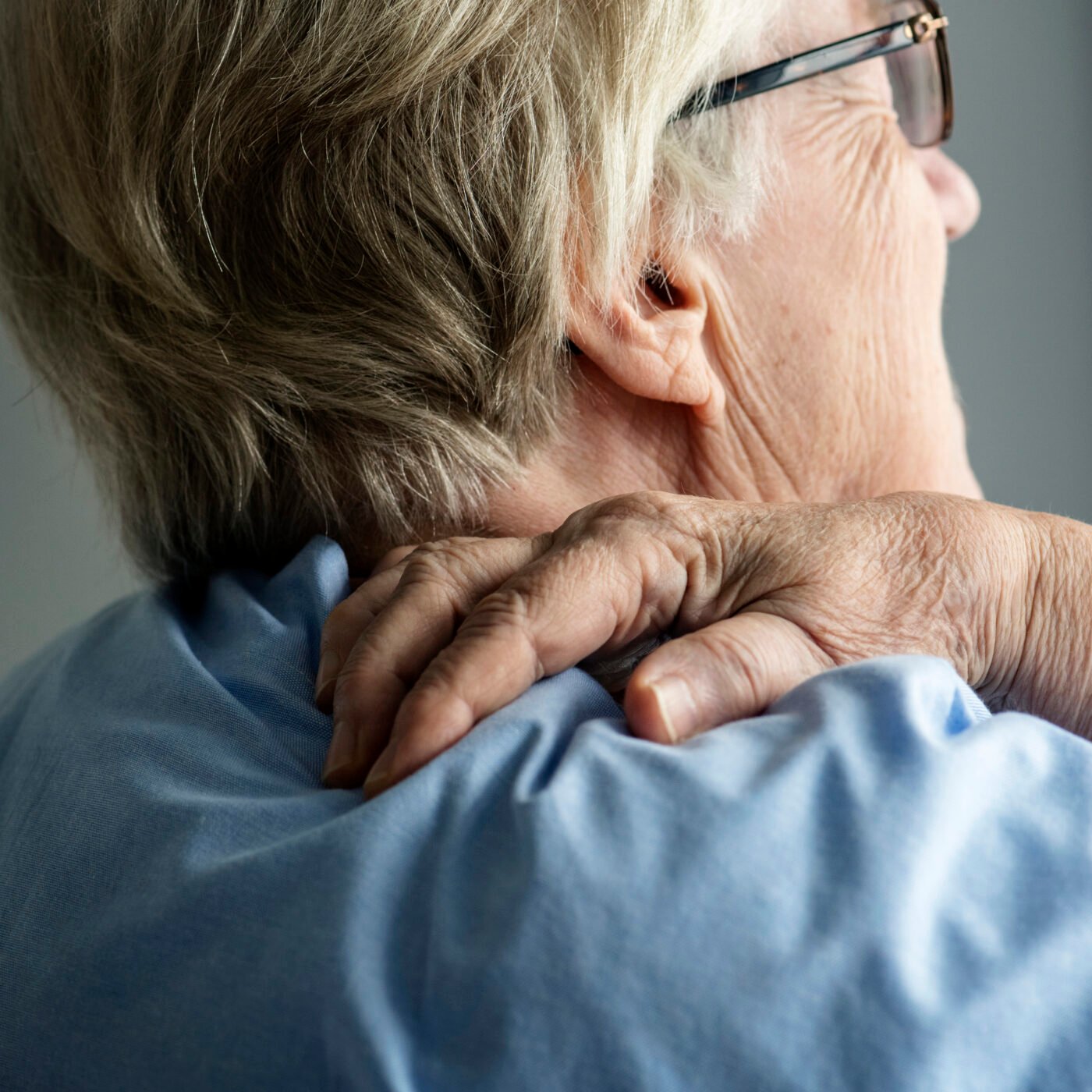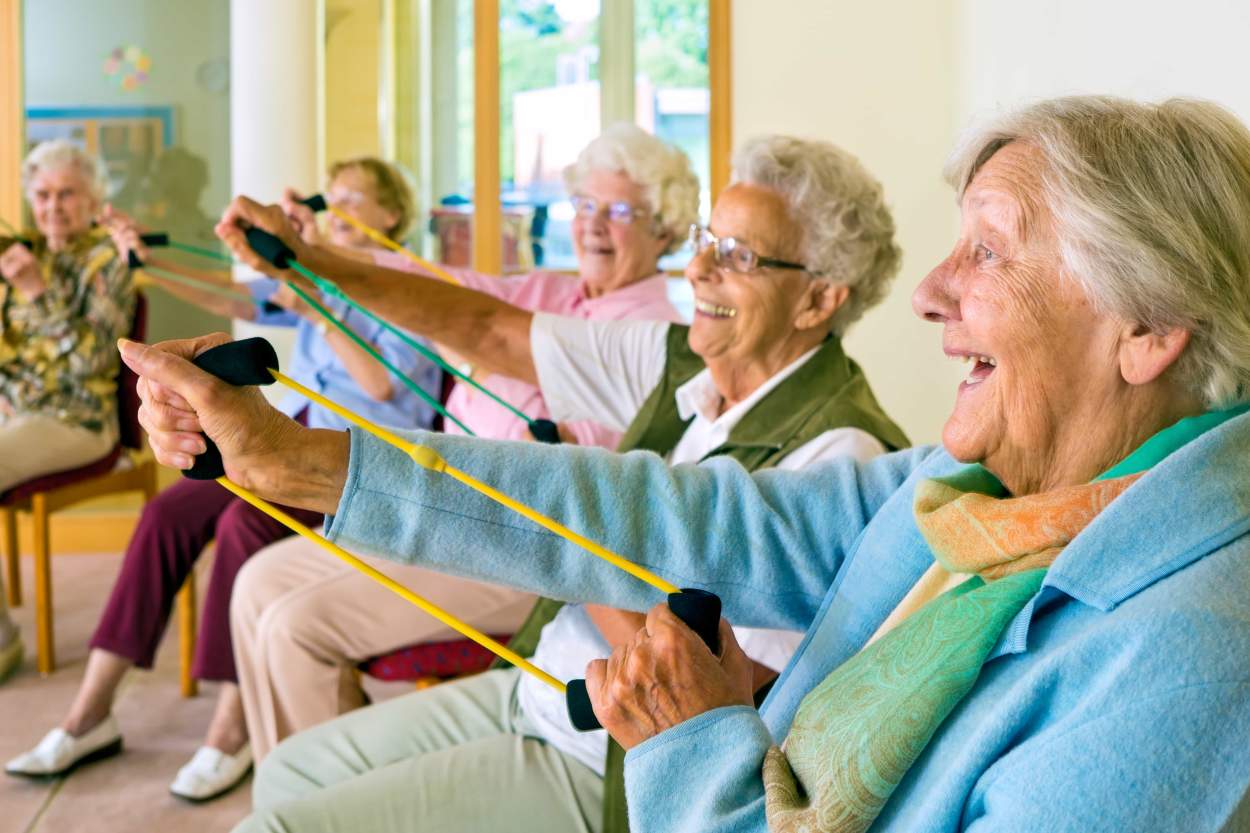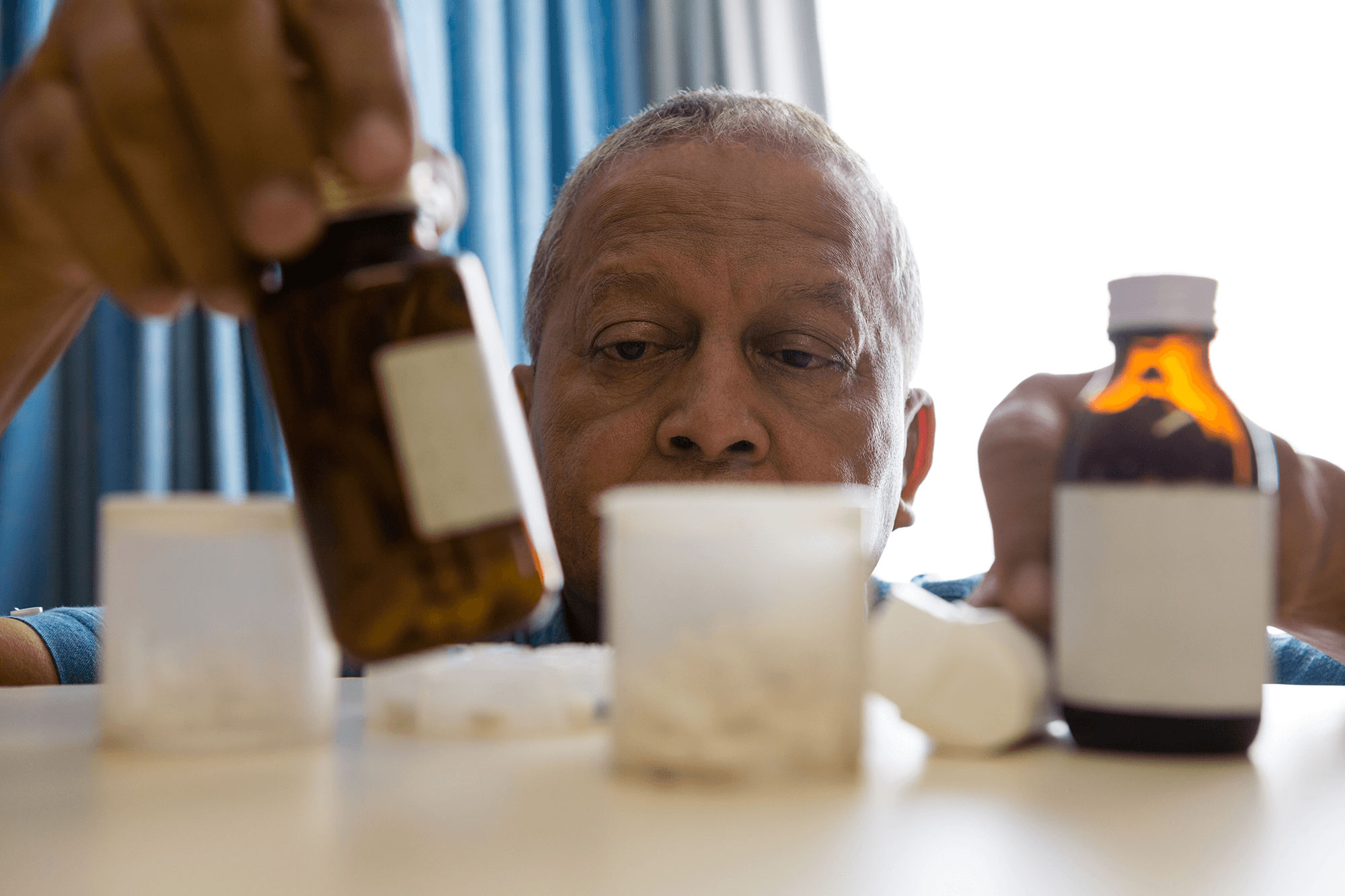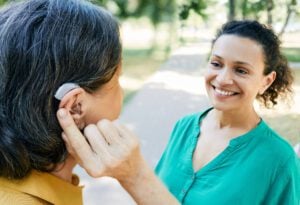What does arthritis feel like?
Tags
Arthritis care
Most types of arthritis fall into one of two categories.
The first is inflammatory arthritis, which is arthritis caused by an overactive immune system. The immune system attacks the body’s own joint tissue, with the most common form being rheumatoid arthritis.
Non-inflammatory, often referred to as osteoarthritis is caused by natural wear and tear of the joints. It can also include post-traumatic arthritis, which can is a type that follows an injury to a joint.
What inflammatory arthritis pain and discomfort feels like
Inflammatory arthritis happens when the immune system wrongly tells white blood cells to attack joint tissue. These incorrect messages are usually caused by an autoimmune condition, that changes or disrupts chemicals in the body.
Theses attacks can cause deformity in joint tissue – making joints weak and painful.
Because there are many types of inflammatory arthritis, the list of potential symptoms and experiences is extensive. However the NHS outline’s it most often feels like:
- joint stiffness, especially in the morning
- swelling and redness of the affected joints
- pain in various areas of the body, not just the joint itself
- general weakness
- limited movement
The usual treatment option will begin with anti-inflammatory drugs, such as NSAIDs (Non-steroidal anti-inflammatory drugs, such as ibuprofen) and, occasionally, small doses of steroids.
People with arthritis can find motion exercises to be effective too. These are often focused on specific movements that strengthen the body and keep joints mobile, to minimise feelings of stiffness and fatigue.

What rheumatoid arthritis pain and discomfort feels like
Rheumatoid Arthritis is a chronic auto-immune disease that causes joints to become inflamed. It’s the most common type of inflammatory arthritis.
It can begin at any time, but is most common between 30 and 50 years of age. Symptoms aren’t always constant, meaning those living with the conditions will often experience ‘arthritis flare ups’ – periods where the pain is worse or more intense.
Symptoms can also vary from person to person so it can be difficult to really pin down exactly what rheumatoid arthritis feels like. However in the majority of cases they are fairly subtle, to begin with, and according to the NHS can include:
- A slight tenderness in certain areas of your body, which reoccurs or can be felt often
- Feeling more tired than usual
- New weakness in certain areas of your body
- Feeling run down as if you have a cold. This can include a slight fever or weight-loss
While many associate arthritis with joint pain, one of the main symptoms as rheumatoid arthritis progresses is fatigue and a loss of energy. This is because fighting inflammation takes a lot of energy. This can sometimes lead to additional symptoms such as depression, and poor appetite.
Dealing with fatigue
- Pace yourself when it comes to daily activities. Try spreading out lots of activities throughout the week, rather than all in one day
- Try tracking when you feel most tired or lacking energy. Look for patterns and use this to create a weekly routine.
Like many chronic diseases, there’s no cure for rheumatoid arthritis, however those living with the condition can manage it with a range of nonsurgical treatments. These can include steroids to ease discomfort, and an anti-rheumatic drug, such as methotrexate. Sometimes called DMARDs, these drugs help prevent the immune system from overreacting and causing joint inflammation. Active (self-directed) motion such as light aerobics, walking, and gentle joint rotations can also free up movement.
People with rheumatoid arthritis may be offered surgical treatment if the condition gets too difficult to manage. Depending on the severity of arthritis, surgical options can include removing the inflamed joint lining, fusing a joint together, or replacing it with an artificial joint.
Tips for living with rheumatoid arthritis
The National Rheumatoid Arthritis Society offer a huge range of tips for living well with this form of arthritis and managing discomfort. These tips include –
- Putting rubber bands or hair elastics around your toothbrush handle, so it doesn’t slip through stiff fingers
- If your hands are stiff first thing, soak them in warm water or massage with baby oil
- Fill the kettle with a lightweight plastic jug, and only use as much water as you need.
- Use a steamer or microwavable packs when cooking vegetables – it’s easier than heavy pans full of boiling water
- Add a piece of ribbon or hair elastic to zips to make them easier to grip and pull
- Jackets and coats with silky linings can be easier to put your arms through
- Keep spares of important items, such as hairbrush, deodorant, toothbrush,and toothpaste downstairs for days when stairs feel too difficult to climb
- Wearing an elasticised woollen sports wrist band (the kind tennis players wear) could help prevent wrist ache

What osteoarthritis pain feels like
Osteoarthritis is another common type of arthritis. It occurs from gradual wear and tear to the cartilage in joints. Cartilage is important as it cushions the connection between two bones, preventing them from rubbing against each other and providing space for the joint to move easily. However, as we age it can begin to get softer, and the cartilage surfaces flake away – exposing the surface of the bone. It’s this ‘breaking down’ process that causes osteoarthritis pain.
Osteoarthritis commonly effects ball and socket type joints, such as the shoulder joint, hip or knee.
According to the NHS, osteoarthritis can feel like:
Stage one – A little intermittent pain may be felt in the affected area, as well as occasional swelling or weakness.
Stage two – The joint will usually start to develop small lumps called osteophytes – and may look a slightly different shape. It may feel tender when you put pressure on it. Pain may start after a long day of activity. On the other hand, if the joint doesn’t move for a long time it will likely feel stiff. strength training exercises, physical therapy and bone-friendly supplements, such as Glucosamine, Fish Oil, and Turmeric may help manage symptoms.
Stage three – Pain and stiffness is likely to become more frequent, and the joint may remain swollen after extended periods of movement. You may also begin to feel a grating, popping or cracking when moving too, due to the damage to the joint cartilage. Over-the-counter and prescription painkillers may be offered at this stage.
Stage four – At this stage the loss of cartilage can cause your range of motion to become extremely limited due to stiffness and increased pain. If osteophytes are present they are likely to have grown and rub within the joint causing sharp and severe pain. this stage usually requires medical treatment to fix the joint damage such as a bone realignment surgery or a joint replacement.
As mentioned above, over time, joints effected by Osteoarthritis develop osteophytes –also called bone spurs. These bony spurs are smooth lumps that grow on the bone, and are particularly common in the spine, hands, feet, hip, knee and shoulder.
In many cases you may not notice a bone spur at first, or feel a slight bump near a joint at most.
However, they can cause problems if they start to rub against a nearby nerve, bone, or tissue.
This can feel like:
- Weakness in or near the effected joint
- numbness or tingling
- A dull pain when using the joint for a prolonged time
- A sharp pain caused by sudden movement
- increased stiffness
- Pain in nearby tendons
Tips for living with osteoporosis
The Royal Osteoporosis Society has some useful suggestions for living with this type of arthritis and keeping discomfort at bay. These tips include –
- Try armless chair exercises to improve muscle strength and balance
- Get up slowly out of chairs and bed to reduce the chances of getting dizzy or unstable
- Choose shoes with a grippy, patterned tread and avoid backless footwear
- Make sure your home is warm enough, cold muscles don’t work as well
- Make a plan for pain flare ups so you can react quickly – this may include relaxation techniques, proven distractions or certain medication
- Split heavy shopping into lighter bags and carry them in both hands, or ask for help when you need to carry heavy items
- try sitting with a cushion supporting your lower back, and keep your knees lower than your hips
When to see a doctor about joint pain
While there is no cure for arthritis, it’s always advisable to see a doctor if you start to experience painful joints. Often, reviewing your medical history for a joint injury, and checking flexibility and signs of swelling will help diagnose osteoarthritis. They may run some blood tests to check for inflammation in the body and rule out other possible causes too.
If your GP suspects rheumatoid arthritis, they’ll usually refer you to a rheumatologist for treatment.
A fast arthritis diagnosis – particularly in cases of rheumatoid arthritis, will allow you to start a treatment that slows down the progression of the condition, rather than simply relieving symptoms.
You may decide to try some alternative therapies whether your joint pain is arthritis or not. Alternative therapies such as yoga, tai chi have been shown to help with pain and can relieve tension and anxiety.
Another popular therapy is Magnetic pulse therapy, which targets pain with a weak electromagnetic pulse. while the effects of this treatment are largely unproven, some do find it helps reduce discomfort, and many small devices are available to buy online.
In the later stages of arthritis, you may want to discuss care options with your GP or health professional. If moving around safely is becoming more difficult, a full-time or visiting carer can help with tasks that require flexibility or constant movement, such as hoovering, and getting in and out of the shower. They can also support you keep up with and attend appointments with healthcare professionals, and provide specialist arthritis care focused on improving daily mobility.
Read more later life articles

Can I arrange nursing care at home?
Nursing care is provides care and treatment to people with complex medical conditions, but is it possible to receive it at home? We take a

Living well with diabetes in later life
It’s estimated that over a third of people with diabetes in the UK are over 65 years of age. That’s around 1.5 million people. Diabetes

Caring for different types of hearing loss
According to Age UK, hearing loss affects around 12 million adults in the UK. People with hearing loss may not always require specialist care in

Vision loss in older people – Is there a cure, and how can it be cared for?
Vision Loss Care: Is There a Cure? Your loved one may develop signs of vision loss as they grow older. However, there are ways to

Motor neurone care: How do I care for a loved one with motor neurone disease?
Motor Neurone care: How do I care for a loved one with Motor Neurone Disease? A diagnosis of Motor Neurone Disease, commonly referred to as

Arthritis in the elderly – causes and care options
Arthritis Care: What Causes Arthritis in the Elderly? Arthritis, which causes painful and inflamed joints, can affect anyone at any age. However, we tend